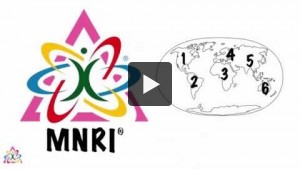


Event Registration
MNRI® Toolbox for Dyslexia
A digital copy of the manual is included with your registration. Hard copies are available for purchase following registration.
Dates: November 30 - December 1, 2024
Location: Slovenia
Address: To Be Announced
Instructor: Helena Björelius
The Masgutova Method® is a set of programs focused on the restoration and maturation of primary movements, reflexes, coordination systems, skills for optimal performance of natural mechanisms, developmental processes, brain functioning, and sensory-motor integration. You can read more about Reflexes and MNRI HERE.
Watch an overview of how MNRI works
The Mission of the Svetlana Masgutova Educational Institute (SMEI) is to provide health, wellness and educational professionals, parents, and caregivers with non-invasive techniques to address maturational, developmental, and life challenges.
NRI® Toolbox for Dyslexia
Neurosensorimotor Techniques for Individuals with Learning Challenges
Learning Objectives: MNRI® Toolbox for Dyslexia
1. Describe how Neurosensorimotor Reflex Integration provides the basis for the successful support of individuals with dyslexia and supports positive changes in motor, behavioral and emotional responses and cognitive/academic tasks.
2. Explain the behavioral-cognitive links in individuals with challenges and how “anchors” are created based on natural innate mechanisms of neurodevelopment and neuroplasticity for formation of the inner control.
3. Explain the theory of the neurophysiology of how a reflex circuit functions and links with dyslexia and limits “studying abilities”.
4. Describe the rules applied to and create behavioral-cognitive anchors through reflex repatterning including the HPA axis.
5. Demonstrate reflexes from a standing position and how they directly affect the development of imitation, inner control mechanisms for cognitive, physical and emotions skills.
6. Explain how these reflexes are involved in motor programming and control, and emotional and behavioral responses.
7. Describe the basis for the development of inner control, cognitive fine motor coordination, speech, self-regulation, and self-management through role-playing games.
8. Explain why protection, fear and amygdala interactions as a reason for challenging behavior.
9. Demonstrate methods to facilitate non-cortical (non-classical) auditory perception and processing using developmental potentials of basal ganglia, thalamus and amygdala through reflex patterns development.
10. Explain the basis for the formation of motor-cognitive coordination and fine motor skills: cognitive differentiation-memory anchoring, hand-eye, hands-auditory-articulation system, and auditory-vestibular system.
11. Demonstrate examples of games and activities to enhance the MNRI ® process integration exercises in an interesting and motivating manner.
12. Apply knowledge gained in this class to develop individual programs using this MNRI ® Program to repattern, activate, and integrate these standing reflex patterns.
13. Apply knowledge gained in this class on how to use the Dyslexia Solution Flower to integrate reflexes that are not supporting growth and development of cognitive, emotional, and physical skills.
14. Describe the rules for creating the links between reflex circuit functions (automaticity level) and skills (consciously programmed, planned and controlled) to base the learning process on natural sensorimotor patterns to make it productive, easier and reliable in stress.
15. Apply the following standing or sitting reflex patterns to help find the individualized solution for Dyslexia: Trunk Extension, Spinning, ATNR, STNR, Sound Directions Game, Acoustic- Stapedius-Game, Acoustic-Stapedius tapping, Visual circles, Horizontal eye tacking, Convergence-Divergence, Hands Supporting, Segmental Rolling, DANCE for developing the skill to identify Yesterday-Tomorrow, Hands Grasp, Babkin Palmomental,Game-Finger Differentiation, Tongue-Eye coordination, Head Righting, Trunk Extension, Spinal Galant, Mouth Spine Rotation, Grounding, Cross lateral Archetype Moves, Bauer Crawling, Bonding Embracing Squeeze, and Landau.
Course Agenda:
Hour 1: Neurosensorimotor Reflex Integration
Hour 2: Behavioral-cognitive links in individuals with challenges
Hour 3: Reflex circuit functioning
Hours 4-6: Reflex patterns
Hours 7-8: Reflexes from a standing position
Hours 9-11: Auditory perception and processing through reflex patterns development
Hour 12: Basis for the formation of motor-cognitive coordination and fine motor skills
Hour 13: Protection, fear and amygdala interactions as a reason for challenging behavior
Hours 14-16: Individual programs using this MNRI® Program
Financial Disclosure: Helena Björelius receives a stipend based upon an enrollment percentage.
Non-financial Disclosure: No relevant relationship exists.
Course Disclosure: The Svetlana Masgutova Educational Institute has developed and patented a licensed technology trademarked as MNRI®. Because there are no other like-kind products available, course offerings will only cover information that pertains to the effective and safe use of the above-named products. This presentation will focus exclusively on MNRI® and will not include information on other similar or related products or services.
Special Needs Requests: If you require special accommodations, please notify SMEI at events@masgutovamethod.com at the time of registration so that needed accommodations can be made prior to the course.
Course Completion Requirements: Full attendance is required to receive a certificate of completion and any available credit hours or CEUs.
Target audience:
Speech Language Pathologists, Speech Language Pathologist Assistants, Occupational Therapists, Certified Occupational Therapy Assistants, Nurses, Physical Therapists, Physical Therapist Assistants, Educators, Psychologists, Physicians, Massage Therapists, Mental Health Counselors, Other Health Care Providers, Parents.
Assessments:
In Person Courses: Self Assessment and technique demonstration.
On line Courses: Self Assessment and technique demonstration.

